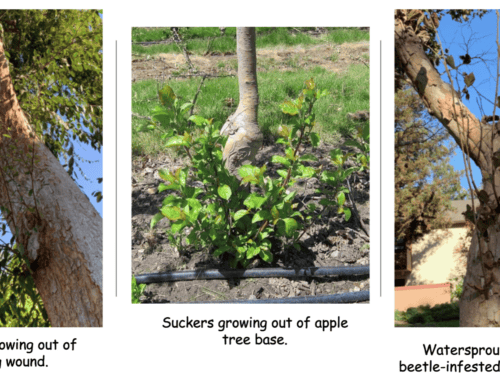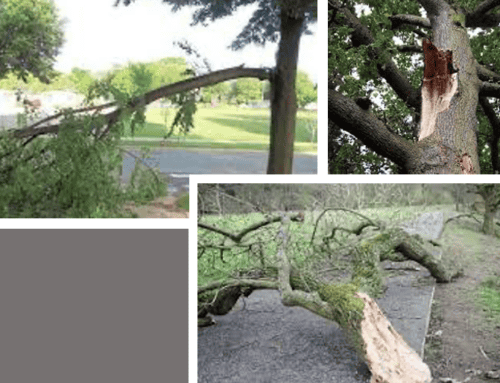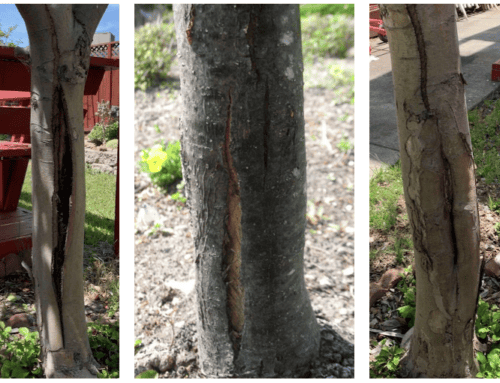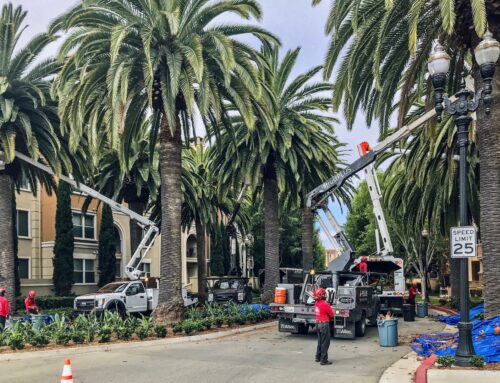
Planting shrubs, flowers, and trees on your home’s property can beautify the space and increase curb appeal. An established tree can also provide shade and help with cooling costs during the hotter months of the year. Trees and shrubs can also help clean the air by absorbing pollutants and greenhouse gases. But is there such a thing as the wrong plant or tree? Tree roots damage to foundations, pipes, and sidewalks can cost homeowners thousands of dollars each year. Because foundation damage occurs over time, it is not usually covered by home insurance, though each claim is treated case by case. This gives the average homeowner something to consider when planning their landscaping. Read on to learn about foundation planting basics and plant selection best practices.
How tree roots damage your foundation
Tree root systems can cause damage to the foundation and pipes of your home if given the opportunity. Typically when they encounter a hard object, they go around or over it. When there is a crack, they will invade in search of water. Tree roots travel horizontally. They travel down when they reach a hard surface like a foundation wall. They can dry out the soil, causing it to shift, which can cause the foundation to shift, depending on the house’s age and the substrate’s quality. If the foundation has even the most minor crack, a tree root can invade the space, growing over time and giving water and vermin a point of access.
Some trees are worse than others. Oak trees account for a small portion of tree species at only 2 percent but were the cause of damage in 11 percent of the cases. Ash, Poplar, and Locusts trees also caused more damage to homes in relation to their population. Trees that grow fast above ground grow equally as fast below ground, so you should not plant these trees near sidewalks, pipes, or homes.
Signs of tree roots under foundation
If you have existing trees on your property and have concerns the root system is causing damage, there are a few signs you can look for to confirm. A tree’s root system doesn’t usually cause damage to a foundation, but it is opportunistic and will invade if it finds a crack. Inspect the inside and outside of the visual areas of your foundation where ever you have trees nearby.
Tree root systems can also cause sinkholes or raise concrete driveways. Inspect the surrounding area for sunken spots and raised or cracked concrete pads like sidewalks and driveways.
When in doubt, hire a professional home inspector to survey your foundation, driveway, and surrounding area for signs of damage caused by tree roots. The average cost of a home inspection is around $300. The cost of repairing a foundation can be thousands, if not tens of thousands of dollars.
What are some good foundation plants?

Now that you know about the signs of damage and some of the worst culprits, we can get to the good part – beneficial plants. Put simply, foundation plants are those that line walkways, entranceways, corners, and the transitions in between. Choosing the right plants can decrease damage to the siding and foundation of your home and add beauty to the property.
Shrubs
Shrubs add dimension to your foundation garden. Box or boxwoods are a common standard because they are evergreen, hardy, and lend themselves easily to shaping. Hydrangeas in bloom add full color to any space and require little pruning. Juniper shrubs provide scent and evergreen color, require little maintenance, and are hardy and drought tolerant. Depending on the species, they can grow low along the ground or to a height of about 24’’.
Good foundation trees
Cupressus, Sorbus, and Prunus are good choices for trees based on the limited damage they are known to cause to concrete and plumbing. The evergreen of the Cupressus looks nice all year round. Evergreens can also provide more privacy and wind protection than deciduous trees because they retain foliage all year round.
Depending on the varietal, the Sorbus genus can provide bright berries and beautiful flowers during the spring. The Prunus or plum tree can offer beauty and delicious fruit, depending on the variety you choose. Other excellent choices include the Japanese Lilac tree, Japanese Maples, and dogwoods which are suitable for small spaces and can provide the beauty of color at varying times of the year. Consider container planting when possible, and be cautious about planting trees too close to the house.
Ornamental plants
Ornamental plants and perennials bring flow to the garden, growing and dying back with the seasons. Ornamental grasses like ruby grass and blue gramma are shorter varietals and only grow to be 1.5 to two feet tall. Larger varietals like feather reed grass and fountain grass can grow to a height of five feet.
Herbs like lavender, thyme, sage, and rosemary can add texture and fragrance to your garden and tolerate full sun.
Hostas and ferns are excellent for part shade and shaded areas because they do not require full sun.
Candytuft, sedum, stonecrop, periwinkle, dwarf crested iris, creeping phlox, and bishop hats can all offer ground cover and seasonal color.
How far should plants be from the foundation?
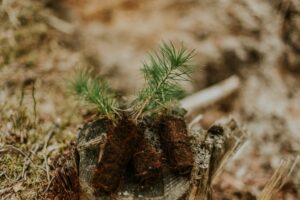
In general, your plants should be at least 1.5 meters from the house’s foundation because the soil next to the house is dry and unsuitable for growth. Shrubs should be placed far apart as they will be high to give them enough room to grow and spread and limit the amount of pruning required. Generally, you should not plant trees near the foundation. If you plant a small tree near a home, try to place it at least five feet from the foundation. Keep in mind that many trees have roots that spread horizontally to the tree’s height. If the tree is 20 feet tall, the root system will likely be at least 20 feet wide.
How to choose the best foundations plants
When choosing plants for your foundation, consider the following:
- Height – will the tree or shrub be in contact with eaves, power lines, or other trees when fully grown?
- Canopy spread – how wide will the tree or shrub get, and will it grow against the side of your house, trapping moisture and dirt?
- Shape – triangular, weeping, round, narrow, and vase-shaped. A narrow tree will grow in less space, but a round tree or vase-shaped tree will provide more shade.
- Growth rate – slow-growing trees usually last longer.
- Soil, sun, and moisture needs – it is easier to choose plants that suit their environment than to change the soil to meet the needs of the plant.
- Fruit – decide if you want the fruit for consumption or if it will be a mess you don’t want to deal with.
- Hardiness zone – know your region’s hardiness zone and choose accordingly. You don’t want to plant a beautiful garden only to have it all die in the first winter.
You should also consider personal factors like allergies. If you have a family member with a severe allergy to bees, you probably don’t want to line your walkways with plants that attract pollinators.
Tips to prevent tree root foundation damage

Once you have chosen your plants, you can set to planting. Before you start, prepare your area keeping in mind you want to protect your foundation as much as possible.
Root barrier systems can limit growth when they are properly installed. Systems like Biobarrier recommend installation at least 60’’ deep.
Remove roots that encroach on areas near your foundation. Growth will happen in favorable conditions. You can control growth by creating an unfavorable growing environment by not fertilizing or watering in areas you don’t want growth. Keep the site around your foundation and under your awnings dry. Cleaning eaves regularly keeps water from spilling over and bringing unwanted moisture to your foundation.
If you have an existing tree threatening your foundation, add it to your list of questions and concerns for your home inspector. If it does threaten your foundation, your only course of action may be to remove the tree. Call around to professional arborists and get multiple quotes. Confirm the quote includes stump and root removal. If the problem tree sends suckers, you will need to remove them to ensure the tree doesn’t just spring up in a new location.
Whether you are considering buying a new home, having a house built, or landscaping your current home, tree selection and placement should be top of mind to limit potential problems for your home’s foundation. With the tips in this guide, you can be confident with your plant selection and placement process and gain a deeper understanding of how that can affect your home and its foundation.
Special thanks to Inspection Support Network for sharing their content!

